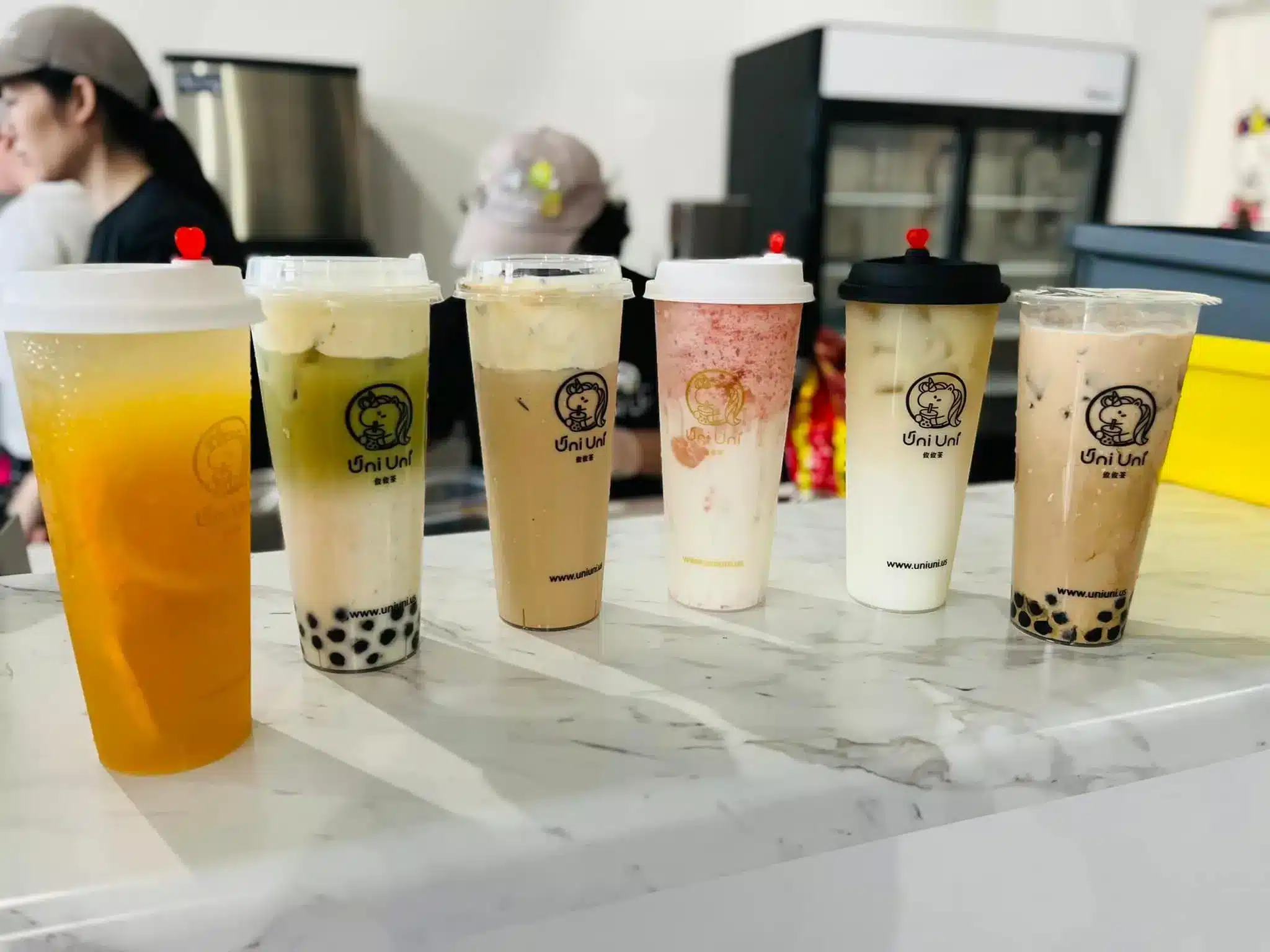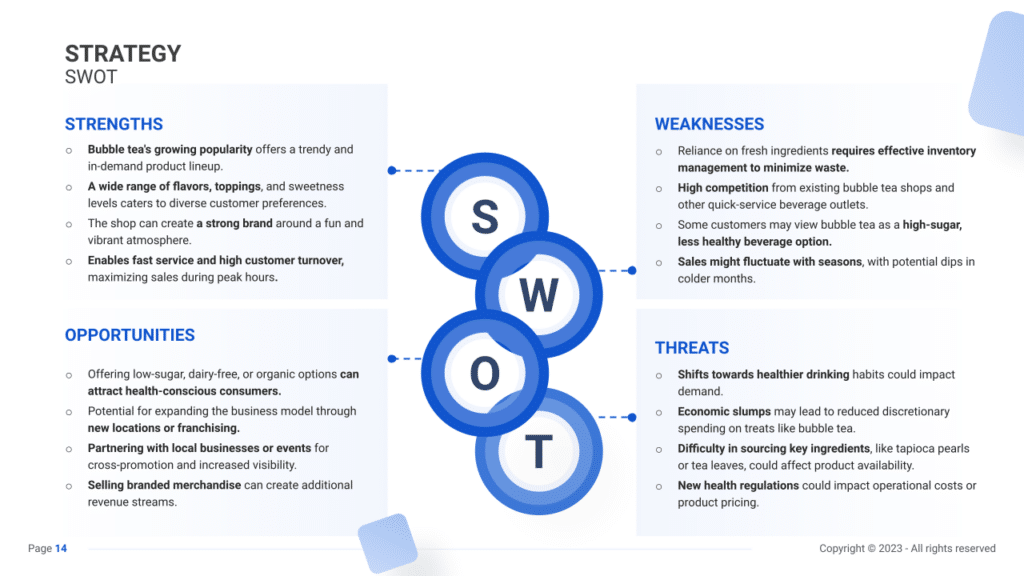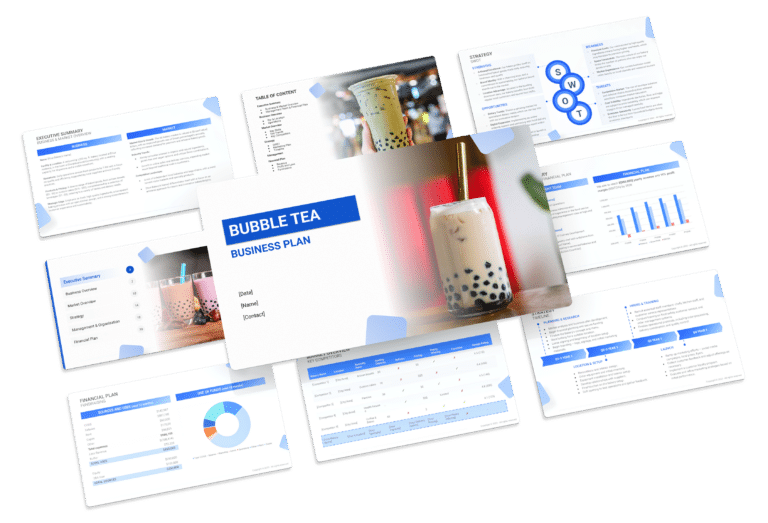How to Prepare a SWOT for a Bubble Tea Shop

Essential for a bubble tea shop’s business plan, a SWOT analysis evaluates internal strengths and weaknesses, alongside external opportunities and threats. Strengths, like diverse flavors and a trendy concept, contrast with weaknesses such as dependence on specific suppliers or limited seating.
This strategic assessment unveils the shop’s market position, highlighting potential growth areas. For instance, opportunities may arise from the popularity of unique flavors, while threats could stem from increased competition or supply chain challenges.
This article will explore various examples of strengths and weaknesses, providing bubble tea shop owners valuable insights for strategic business planning.

Strengths
- Unique Flavor Combinations: Bubble Tea offers a diverse range of flavors and combinations, allowing you to stand out in a crowded market.
- Example: Creating signature, innovative flavor combinations that can’t be found elsewhere can become your unique selling proposition (USP) and attract a loyal customer base.
- Customization Options: Bubble Tea is highly customizable, enabling you to cater to a broad audience with different taste preferences.
- Example: Offering a “Build Your Own Bubble Tea” option where customers can choose their base, flavors, sweetness level, and toppings can enhance customer satisfaction.
- Health-Conscious Options: The ability to offer low-sugar or sugar-free options caters to health-conscious customers and those with dietary restrictions.
- Example: Promoting your studio as a healthier Bubble Tea alternative by using natural sweeteners or offering dairy-free options can attract health-focused customers.
- Social Media Appeal: Bubble Tea is visually appealing and highly shareable on social media platforms, making it a natural fit for generating buzz and attracting a younger, tech-savvy audience.
- Example: Encouraging customers to share their Bubble Tea creations on social media with a unique hashtag can help you increase brand visibility and user-generated content.
Weaknesses
- Ingredient Sourcing Challenges: Ensuring a consistent supply of high-quality ingredients, especially tapioca pearls, can be challenging and may lead to quality control issues.
- Example: Developing a reliable supplier network and conducting regular quality checks on ingredients can mitigate this weakness.
- Seasonal Demand: Bubble Tea sales may fluctuate with the seasons, with a potential drop in sales during colder months.
- Example: To address this weakness, consider offering seasonal promotions or introducing warm Bubble Tea variations during the winter.
- Intense Competition: The Bubble Tea market is highly competitive, with numerous existing and new competitors entering the industry.
- Example: To overcome this challenge, focus on differentiation through exceptional customer service, unique flavors, and a compelling brand story.
Opportunities
- Health and Wellness Trends: Embrace the growing trend of health and wellness by offering Bubble Tea with functional ingredients, such as herbal infusions or superfood toppings.
- Example: Introducing a line of Bubble Teas with ingredients like matcha, chia seeds, or collagen can tap into the health-conscious market.
- Franchising and Expansion: If your Bubble Tea Studio proves successful, consider franchising or expanding to new locations.
- Example: Partnering with franchise consultants and securing funding can pave the way for rapid expansion into new markets.
- Collaborations and Partnerships: Collaborate with local cafes or restaurants to offer Bubble Tea as part of their menu, expanding your customer reach.
- Example: Partnering with a nearby dessert cafe to offer Bubble Tea as a dessert option can boost sales and cross-promote both businesses.
Threats
- Changing Consumer Preferences: Consumer tastes can evolve rapidly, potentially leading to a decline in Bubble Tea’s popularity.
- Example: Keeping an eye on market trends and conducting customer surveys can help you adapt to changing preferences and innovate accordingly.
- Regulatory Changes: New regulations related to food safety or sugar content could impact your business operations.
- Example: Staying informed about local and national regulations and proactively adjusting your recipes and processes can help you stay compliant.
- Economic Downturns: Economic downturns can affect consumer spending, leading to reduced discretionary spending on items like Bubble Tea.
- Example: Diversify your revenue streams by offering catering services or packaged Bubble Tea kits for at-home consumption during tough economic times.





